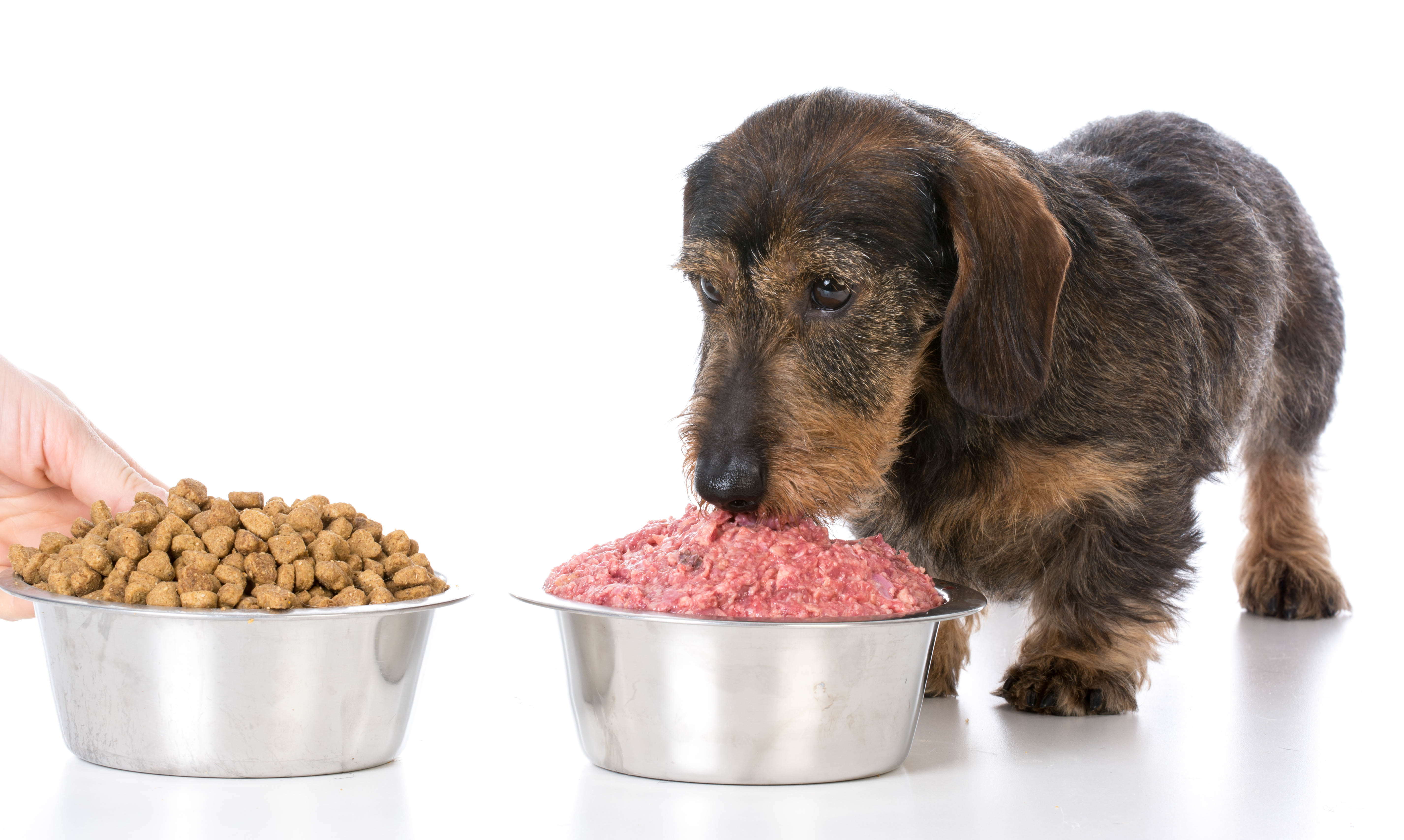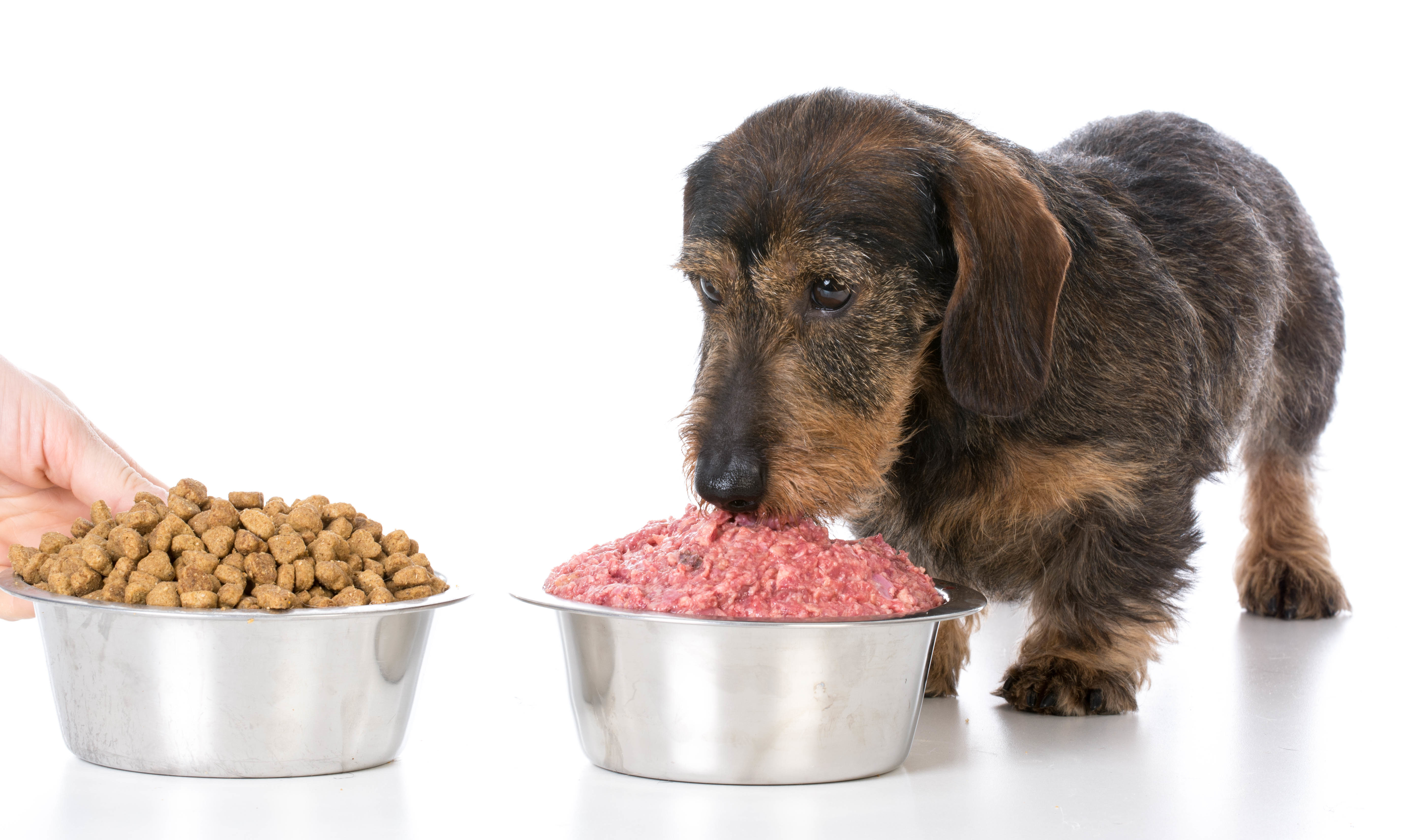
A common question that arises from our customers is whether they should mix kibble with their dog’s raw diet. We generally discourage this because of the potential issues that can arise from the practice, so I’ll use this article to outline the ‘why’ behind our answer!
The digestive tract of a dog varies quite a bit from that of a human, but digestion – whether in human or dog – is basically the same process. Enzymes in the digestive tract are proteins that break down and digest the food that you or your dog eat and convert it to energy. Some of these enzymes are found in the stomach and the rest are produced in the pancreas, where they travel to the small intestine to take care of the end of the digestive journey. We’ll talk about the importance of those enzymes a little more in-depth in just a bit.
The stomach produces hydrochloric acid, and in an amount that makes a dog’s stomach quite acidic – a pH level of 2 – around the same level as raw vinegar. The stomach plays a key role in making the digestive tract run, as well as performing a couple of other functions. Having a consistent and strong pH level is paramount to so many systems operating properly in your dog’s body, it simply cannot be overstated.
Now, one of the main differences between feeding your dog a raw diet and one that’s kibble-based is the amount of carbohydrates contained in each. Where a raw diet is very low in carbohydrates or starches – ideally 5%-10% through any added fruits or vegetables – kibbles need starch to bind their ingredients together into those little nuggets we’re all familiar with.
So how much starch? A lot – often ranging from 30% to 60% of the kibble’s formula!
Why is this bad for your dog – especially a raw fed one?
First, carbohydrates or starches increase the pH level of your dog’s stomach (makes it less acidic). This isn’t good because one of the enzymes (I told you we’d come back to them) that is key to digestion is pepsin, and it breaks proteins down into amino acids that your dog needs in the pre-digestive phase. If your dog’s stomach acid falls below a pH level of 2, pepsin isn’t released from the stomach – so proteins aren’t properly broken down in the digestive system.
Second, aside from being an engine for digestion, your dog’s stomach also plays an important role in protecting him from any sort of bacteria that might be consumed along with his food – or through anything else that finds its way in his mouth.
With a less acidic stomach, bacteria like E coli and salmonella have a higher probability of surviving and thriving in your dog’s belly. Dogs have evolved so that their digestive systems are able to neutralize bacteria, but when you start changing the pH level of their digestive tracts by feeding too many carbohydrates and starches, you could be opening a whole Pandora’s Box of problems.
What kind of problems? Well, when partially digested food leaves the stomach and Is ready to go through the final digestive steps, if it’s not at the proper pH level the correct enzymes won’t be released from the pancreas to finish off the process. That means more undigested food particles in the system and this can lead to leaky gut syndrome – where undigested food and pathogens pass through the lining of the small intestine and potentially lead to immune disorders and inflammation.
If any of that undigested food leaving the stomach (with an improper pH level) makes it to the colon, it can wreak all kinds of havoc that will manifest as things like diarrhea and could even progress into Irritable Bowel Syndrome (IBS).
Third, and one of the most important for dogs, is that if the pH level of the stomach is too low, dogs simply can’t deal with bones efficiently. Since bones are a key ingredient of the raw diet, it’s of the utmost importance that dogs are able to process them and absorb all the minerals that are made available to them. The lower pH levels in an ‘over-starched’ digestive system also don’t allow for the bones to be physically broken down as they should, leading to possible bowel obstruction down the road – something your dog would certainly like to avoid.
If going to a completely raw diet absolutely isn’t an option, there are ways to make the combination of raw and kibble safer; but they involve adding even more to your dog’s diet in the way of probiotics to increase healthy gut flora, or things like apple cider vinegar to decrease the dry food’s pH level and make it more acidic. For simplicity and safety’s sake, we always suggest that an all-raw approach is the best way to go for your pet, but any fresh, raw food that can be incorporated into a dog’s diet is always better than none at all.
________
Information in this article gathered from DNM University’s Raw Dog Food Nutrition & Pet Food Nutrition certification courses.

